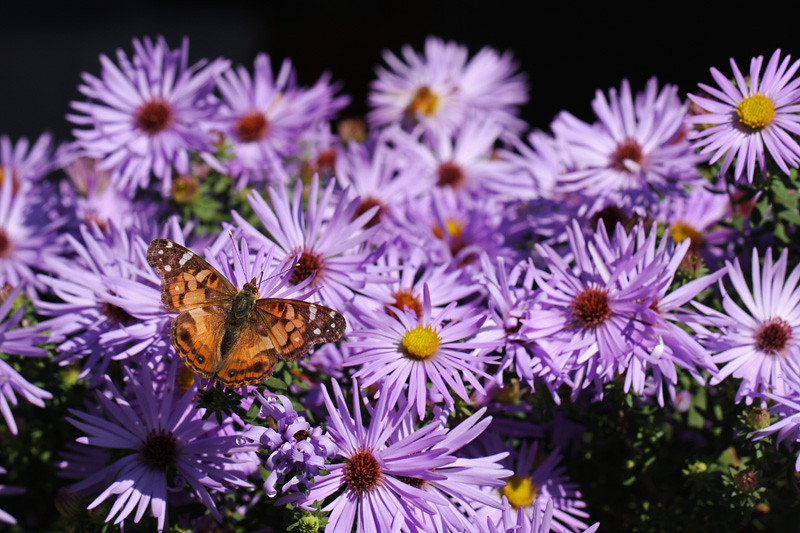This year seems to be different. Earlier this summer, I found a single Painted Lady nectaring on blooming Common Milkweed in the yard. This was only the second individual of this pink and black butterfly that I had noted for the property! After a few days of fueling from the milkweed patch, the lady moved on. As the summer progressed, I saw numerous American Ladies (Vanessa virginiensis), the more common and more orange counterpart of cardui.
 |
| American Lady, the more common Vanessa in this region |
When I stepped out of the house yesterday morning, a brightly-colored butterfly shot up from a pink Phlox next to the porch. The butterfly fluttered skyward with quick wingbeats in a corkscrew-like flight pattern, characteristic of the ladies. This individual went out of sight, but I soon noticed several other ladies on nearby flowers.
 |
| Painted Lady on Phlox |
I immediately noticed the pink-orange color that seemed slightly different than the coloration of an American Lady. When I got closer, I noticed the smaller details in patterns that separated these individuals from their similar cousins. As I looked around, I counted about a half-dozen of these gorgeous insects, more Painted Ladies than I had ever seen at one time (except, perhaps, for when we raised them from caterpillars in kindergarten). Several more scatted off the gravel driveway as I walked past. Almost every open flower in the field was attended by one of these butterflies--the ladies were everywhere!
As the sun got stronger, I spotted a single Monarch gliding southward on a gentle breeze. One of the ladies from the flowers in front of me flew towards the Monarch, hitching a ride on the same wind as the larger migrant. Out-flapping the Monarch, the lady took the lead and disappeared into the distance.
 |
| Monarch on its way to Mexico |
August and September are the primary months for butterfly migration here in Pennsylvania. Southbound species, including Monarchs, ladies, and Red Admirals, all begin their journeys around this time. The ladies and admirals may only travel far enough south to reach year-round warm weather, whereas the mighty Monarch will travel all the way to central Mexico. Early autumn is also the season when many southern species wander north. Giant Swallowtails and Long-tailed Skippers start to show up in Pennsylvania around the middle of August every year. Other species including Ocola Skippers, Little Yellows, Sleepy Oranges, and Dainty Sulphurs seem to have "boom" years, when large numbers suddenly begin to appear far north of their typical southern ranges. This year has been the year of the Dainty Sulphur, with droves of these petite southerners popping up throughout Ohio and Pennsylvania.
Today, I found about fifty of these beautiful ladies in my yard. I know they are transients this time of year, but I hope they at least stick around for a few more days!






